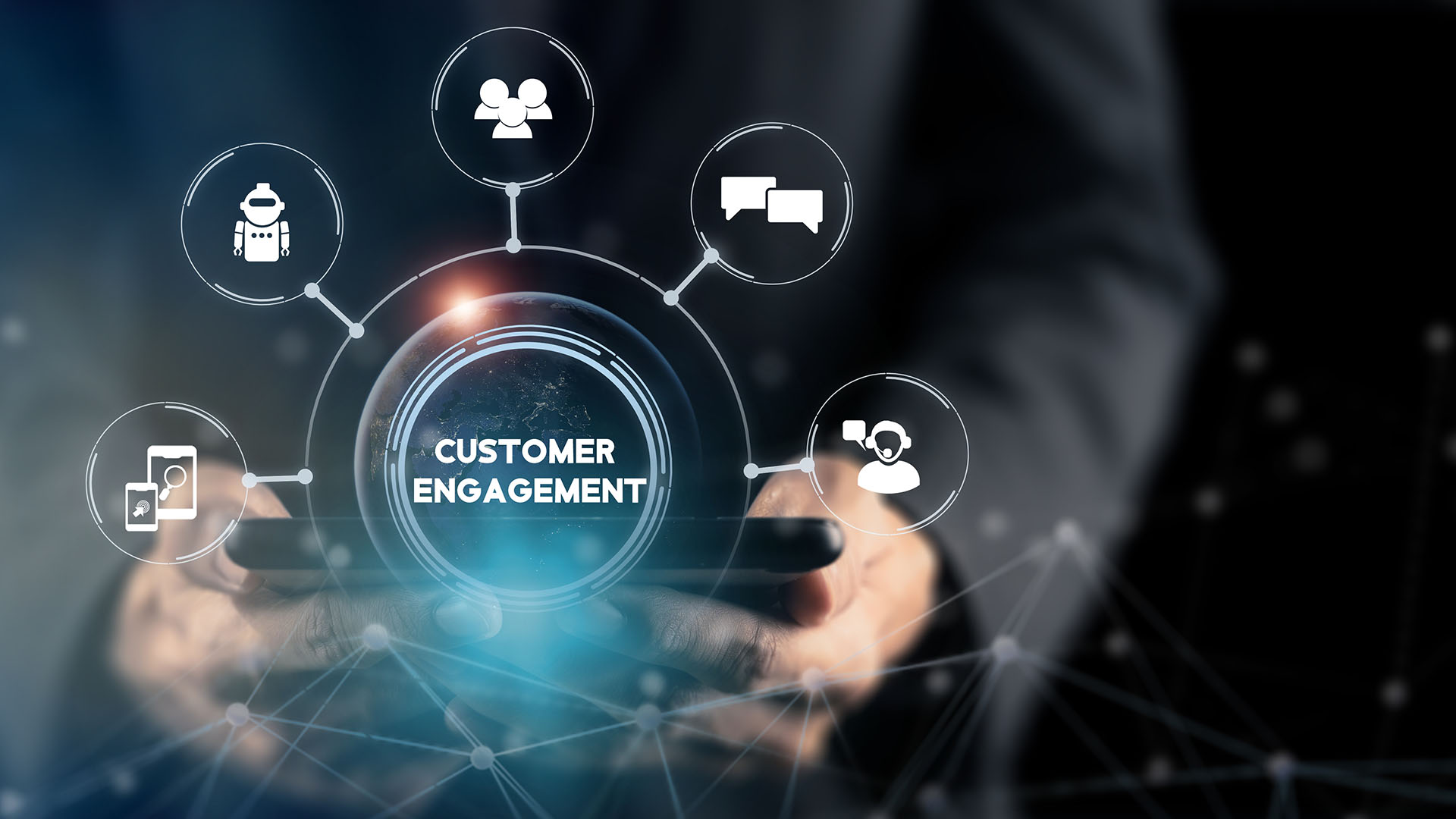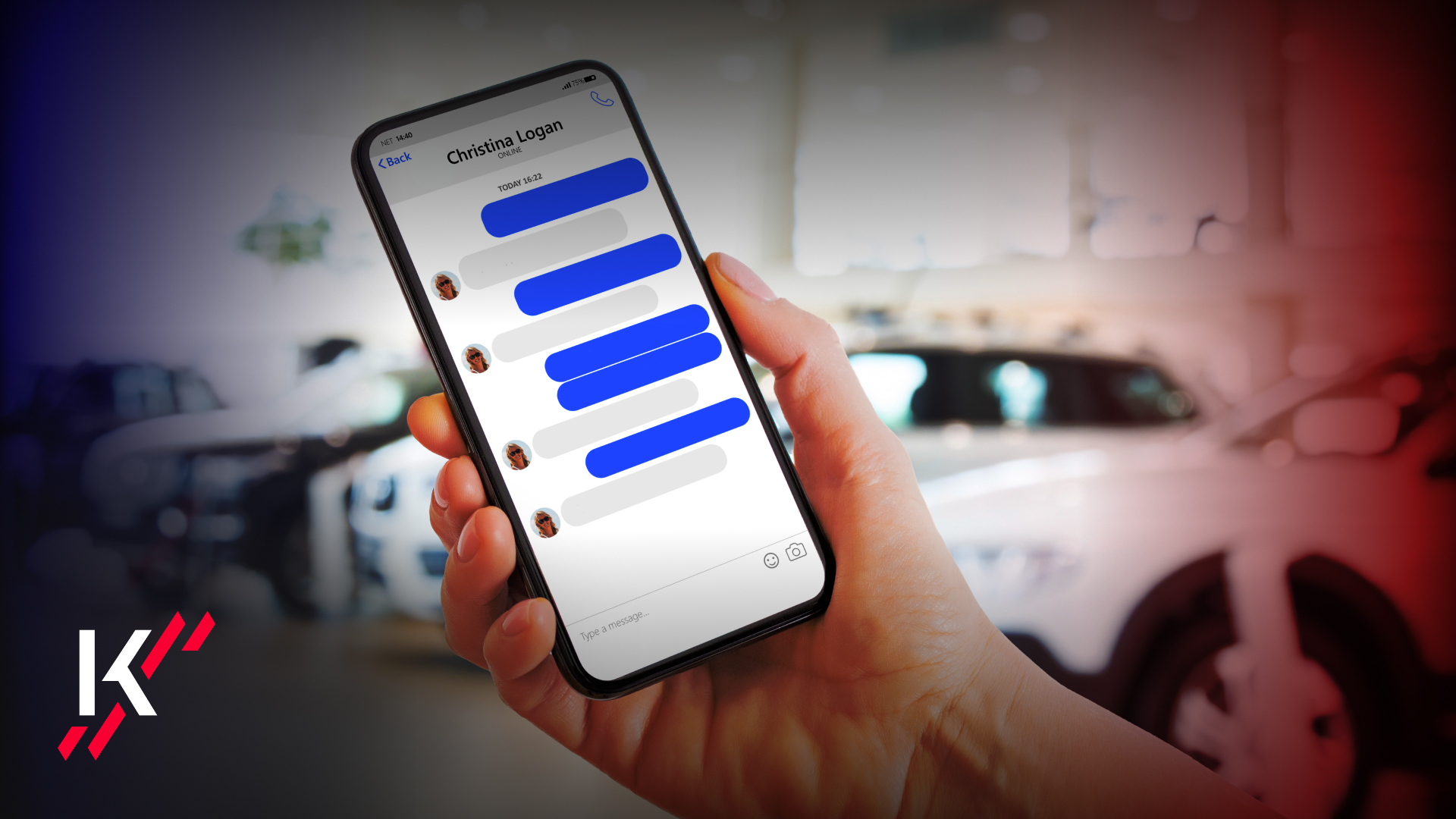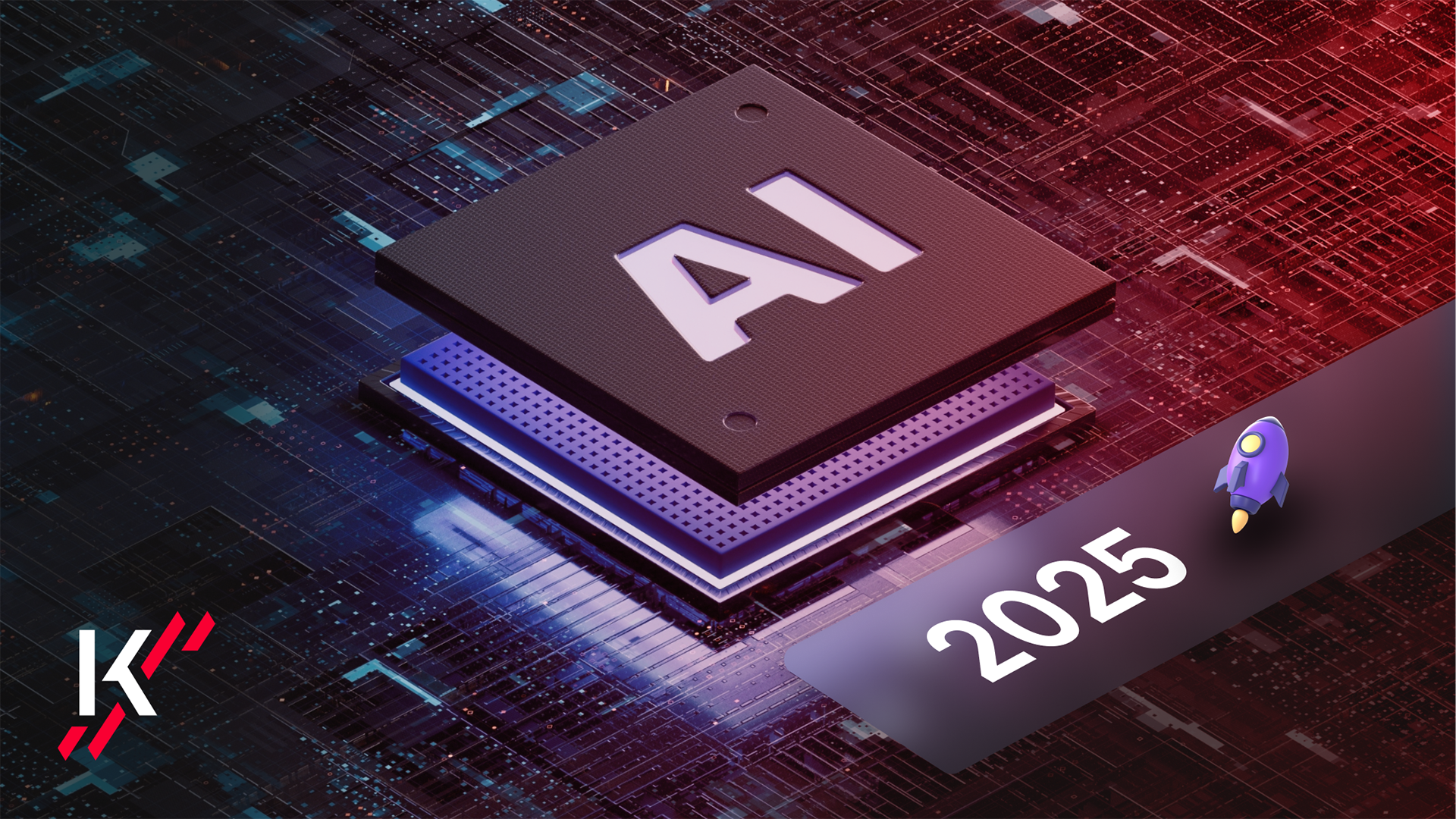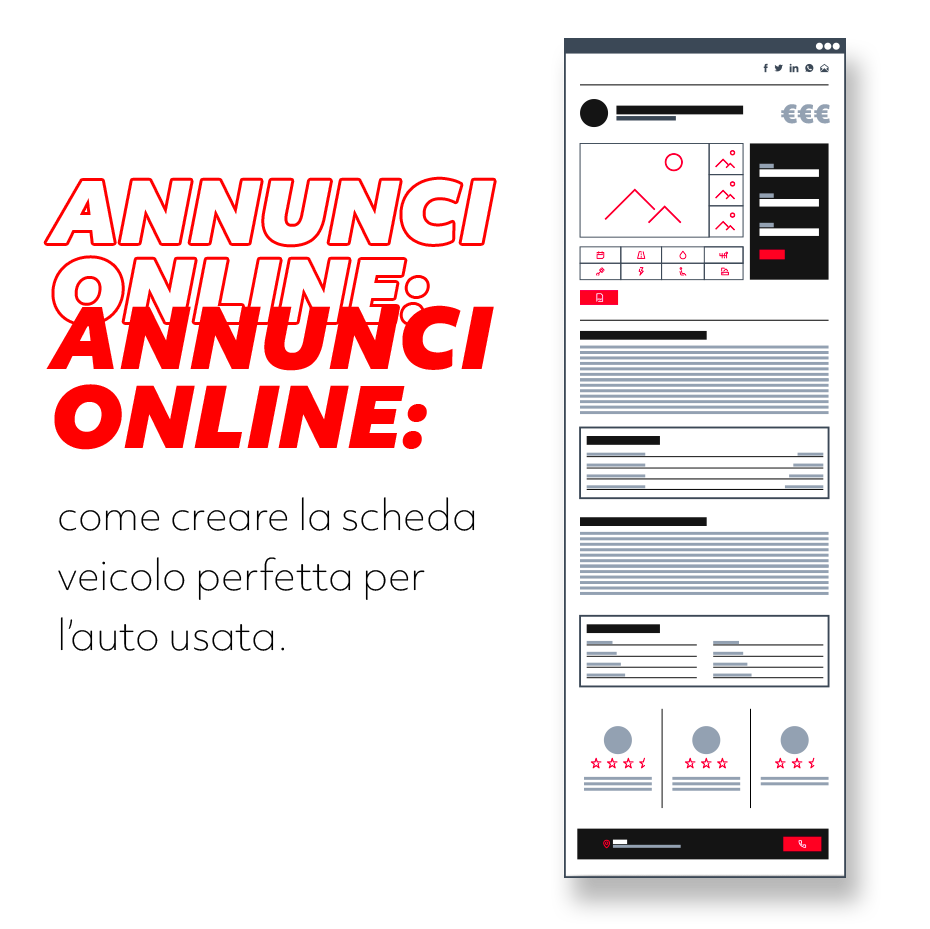How can automotive retailers engage customers along a purchase journey that is rapidly evolving into a personalised, hybrid experience, spanning across both physical and digital touchpoints? Traditional customer support, which is essentially reactive, should be entirely reconsidered to better address clients’ needs. Technology can and should be the driver for mobility players who wish to stay relevant and interact with prospective clients in the right place, at the right time and with an optimised use of resources.
Automotive distribution is possibly one of the industries that is being disrupted the most by the digital revolution. While other sectors had years to narrow the gap, car manufacturers and dealers were pressured to review their retail model by the limitations imposed by the Covid pandemic and the recent global macroeconomics and socio-political situation. Today’s omnichannel scenario is therefore the combination of the customers’ generational change and new ways to approach the customer journey, and external factors affecting the industry performance.
In such a context, the relevance of conversational marketing and conversational technology has exponentially grown, becoming a key pillar in the digital strategy of companies in the acquisition of qualified leads and the implementation of effective customer relation activities.
What is conversational marketing?
Quoting IBM, conversational marketing is
a method that engages consumers in dialogue-driven, personalised experiences at a one-to-one level, enabling brands to listen and gain unique customer insights while also providing value to the user.
Today, automotive retailers deal with customers that are increasingly more used to instant messaging as the way to interact with brands, especially within younger audiences; if 24% of Traditionalists and Baby Boomers express a preference for online chats and support, this percentage goes up to 53% for Millennials and Gen Zers (Source: Salesforce, State of the Connected Consumer, 2018). For this reason, being able to offer such integrated services can make a significant difference for dealers in driving the customer’s attention and making up for the loss of walk-ins at the physical dealership, at the top of the funnel – during the search for information, particularly when a purchase decision has not been made yet.
How does customer engagement work in the omnichannel ecosystem?
Engage. Connect. Extend. These keywords can summarise what successful customer support in the omnichannel environment should look like. If we consider the website as the digital counterpart of the physical dealership, here’s what a digital dealer should aim to achieve:
- engage customers during the website browsing experience by providing a wide range of communication tools to facilitate interaction;
- connect with customers using a comprehensive suite of conversational tools, which enables a personalised customer experience while providing evidence of where bigger business impact can be achieved and allows you to take control once the user is ready to move the sales process forward;
- extend availability to prospects 24/7/365, thus increasing the chance of accompanying customers further down the purchase funnel at any time.
Conversational technology is the tech element that can help companies overcome the challenges and limitations of a model that implies round-the-clock availability. Powered by artificial intelligence, chatbots, in particular, use natural language processing to scale up customer support by creating automated, yet personalised conversations with the users.
Profiling customers that are visiting the dealership’s website and engaging with them while their interest is at the highest level is essential. To this purpose, conversational technology can play a major role alongside human-based customer support in removing roadblocks along the way, enabling a more satisfying customer experience and enhancing the chances to finalise the purchase.
Depending on where customers are along their purchase journey, several conversational tools can support different objectives.
- Chatbot: provides initial customer profiling and data collection, to qualify leads
- Live chat: allows real-time interaction with the customers where and when they need it, avoiding unnecessary noise and unsolicited engagement, to establish a relationship and nurture leads
- Videocall: offers the highest level of assistance with the convenience of a digital-based interaction, to transform leads into engaged prospective customers
- Co-browsing: represents the maximum level of engagement, to troubleshoot issues in real time and increase chances of customers moving forward with or finalising their purchase
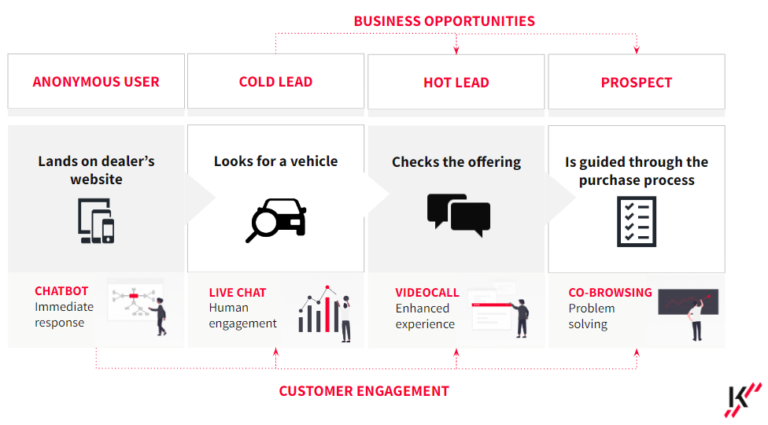
While traditional customer support is 100% based on a personalised approach but with a non-measurable business impact until the very end, customer support 2.0 can leverage conversational technology to increase personalisation (thus customer engagement) alongside with business opportunities, ensuring a more strategic use of resources without compromising customer experience.
Why is digital-based customer support beneficial for the business?
The benefits of Customer Support 2.0 are undeniable:
- improve customer satisfaction through real-time interactions;
- increase trust thanks to a consistent brand experience across all touchpoints;
- use automation to qualify leads and better target marketing actions;
- acquire relevant insights to enrich your CRM and refine your business strategy.
By now, it’s evident that successful customer engagement in today’s automotive retail can be achieved through the synergy of 1. human skills, with salespeople working more and more as consultants, in combination with customer success and customer service roles; 2. AI-based technology which can break down and filter interactions and trigger the right channels and functions; 3. data analysis to feed CRM and business intelligence tools.
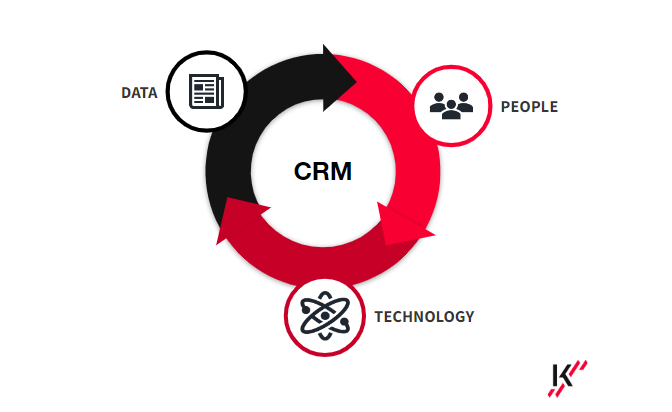
The CRM flywheel is powered by people, technology and data, that must work in sync to create relevant insights to grow the business.
What are the next steps for automotive retailers?
Automotive retailers should adjust their strategic approach and operations to the new omnichannel customer journey and in particular:
- implement a digital customer support strategy based on conversational marketing tools that can improve lead qualification and optimise use of resources with better ROI;
- invest on a solid CRM system to collect and analyse customer information for targeted sales and marketing activities;
- adapt internal processes to allow for more flexibility and availability to respond to customer enquiries for an extended period of time beyond traditional working hours, with higher engagement and timely follow-ups;
- upgrade their tech stack to an integrated architecture that can support customer interactions along all touchpoints in a seamless and cohesive way, and collect insights to create value for both customers and providers.
The MotorK answer to the need of a technical solution fully supporting Customer Support 2.0 is LiveSparK, a conversational tool integrated with the SparK platform designed to enable chat, live video & audio calls, co-browsing and bots. Available as a WebSparK module with the same brand look and feel, it can be easily activated and is fully compliant with cookies and GDPR legislation.
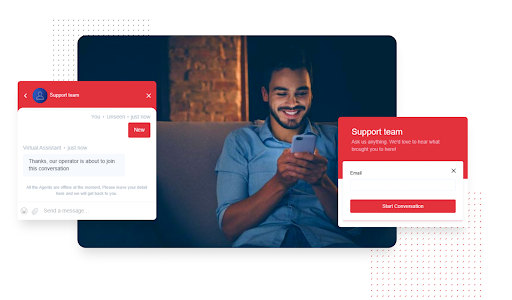
Thanks to the seamless integration with WebSparK, the customer experience is enriched and engagement can happen in the right place, at the right time.
With LiveSparK, dealers have full control over internal workflows, by defining people involved, rules, and user engagement patterns. Thanks to the CRM integration, LiveSparK is a powerful tool to generate and nurture leads with a data-driven approach. It is also designed to work in conjunction with other MotorK solutions to attract, engage, convert, and grow customers with the ultimate goal of creating value all along the purchase journey.
Request a demo and find out how you can take your customer journey to the next level.

